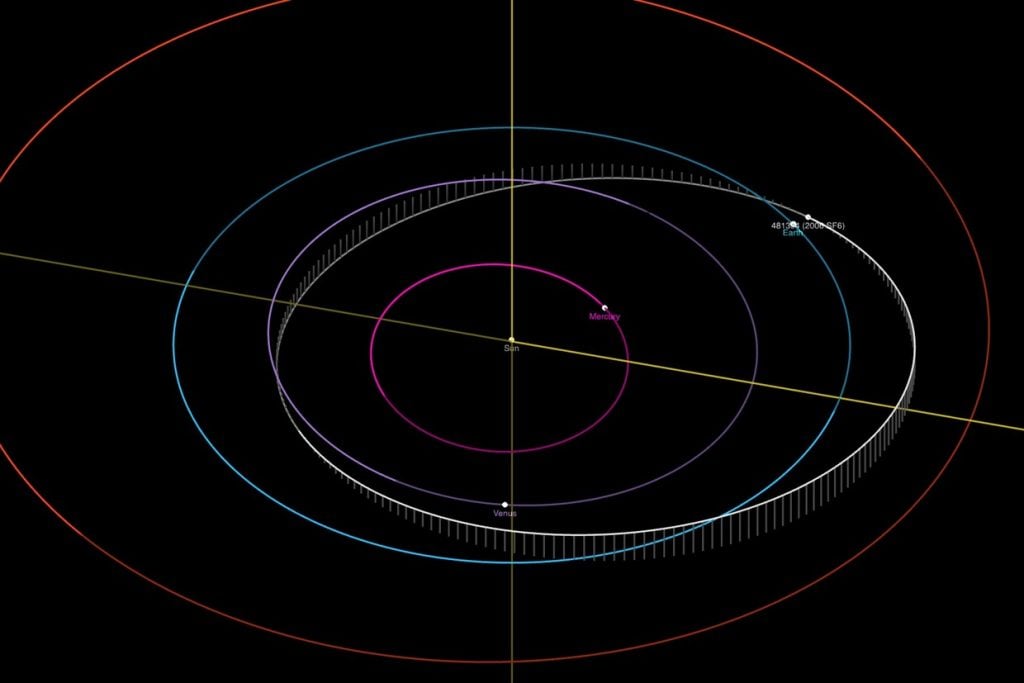The seemingly never-ending stream of Earth-bound space rocks continues.
An Apollo-class asteroid measuring between 918ft and 2,034ft in diameter (280m-620m) is due to skim past our planet on November 21.

Affectionately dubbed ‘481394 (2006 SF6),’ the asteroid is traveling at a speed of roughly 17,780mph (27,360kph).
The huge space rock will make what NASA dubs a ‘close approach’ shortly after midnight (GMT) in mid-November at a distance of 2.6 million miles (4.2 million kilometers) away, or approximately eleven times as far away as the Moon.
The Apollo-class space rock is estimated to measure up to twice the size of the Eiffel Tower (or half the size of Ben Nevis for Brexiteers).
The animation depicts a mapping of the positions of known near-Earth objects (NEOs) at points in time over the past 20 years, and finishes with a map of all known asteroids as of January 2018:
Apollo asteroids are Earth-crossing asteroids initially discovered by German astronomer Karl Reinmuth in the 1930s.
They comprise a little over 10,000 of NASA’s 19,000 known ‘near-Earth objects’ (NEOs), which orbit the Sun within 18,600,000 miles of our planet.
While the risk of impact is low, there is a small chance the Yarkovsky effect, in which sunlight can steer asteroids off their current trajectory, may send the November 21’s asteroid even closer to Earth. [RT]












